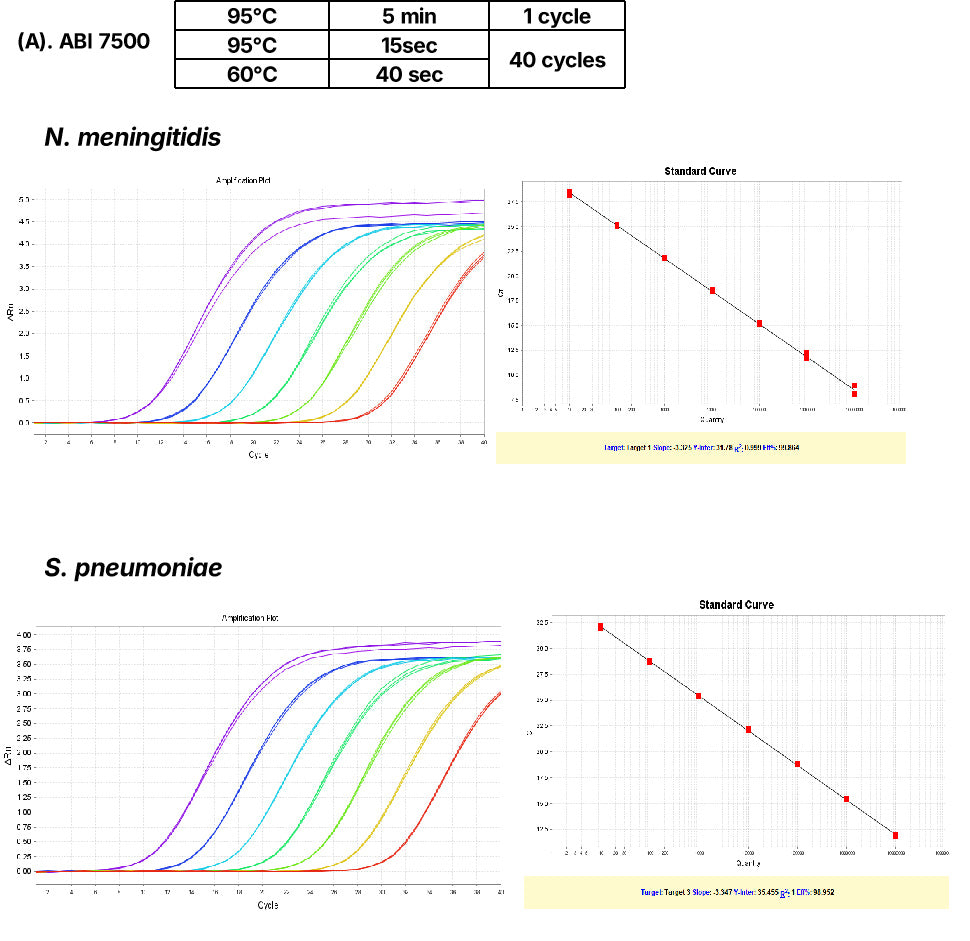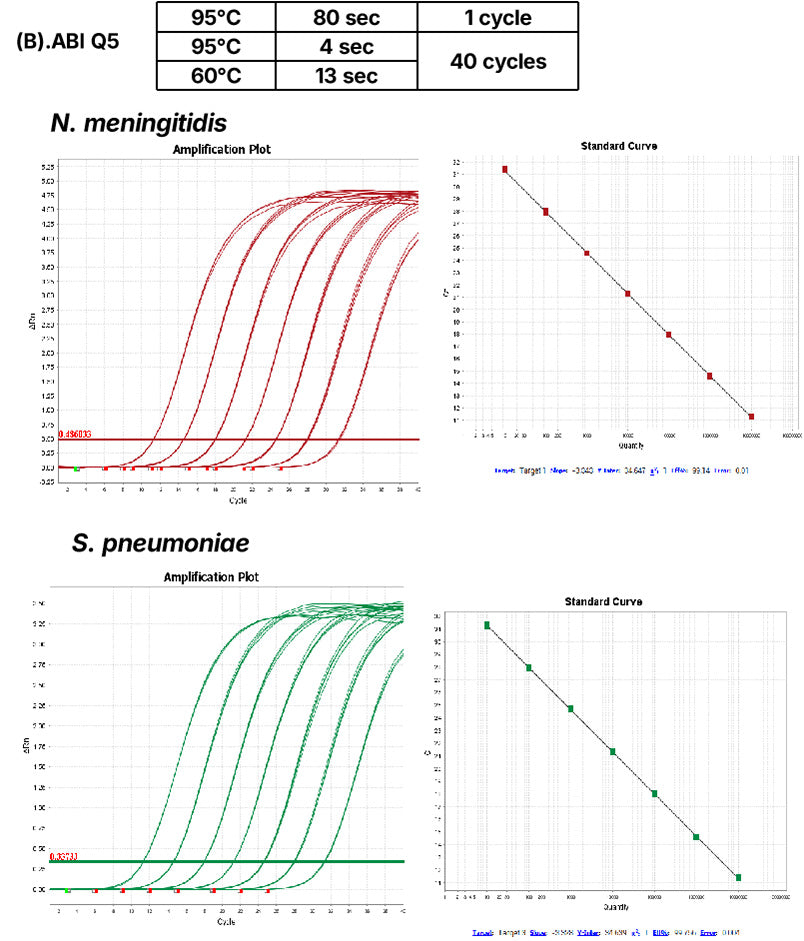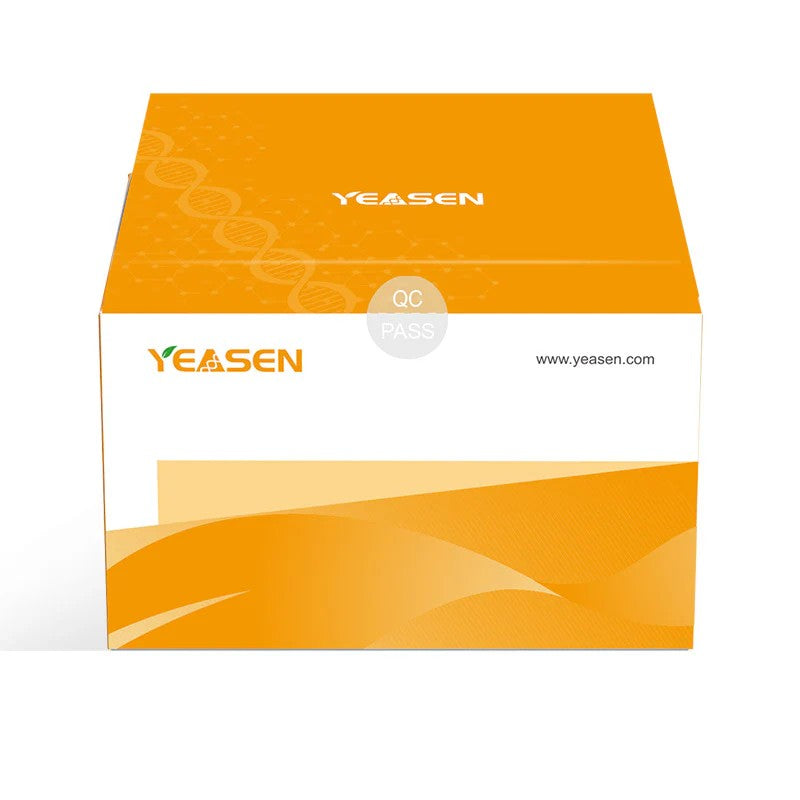Descripción
Hieff UniconTM Universal Superfast qPCR Mix (One Tube) is a fluorescent quantitative qPCR premix that employs the company's new-generation antibody-mediated hot-start Taq DNA polymerase. This product features broad applicability, supports fast protocols, and comes in a fully pre-mixed format.
Features
- Supports fast protocols: Results available in as little as 20 minutes.
- Excellent premix stability: Stable after 7 days at 37°C and 20 freeze-thaw cycles.
- Low-DNA residue: No detectable residual DNA from E. coli, P. aeruginosa, or human genomic DNA across 48 wells.
- Broad reagent compatibility: Compatible with over 40 types of multiplex primers/probes; consistently delivers stable amplification.
- High sensitivity and specificity: Detects as low as 200 copies/mL; no false positives in 48 negative samples.
- dUTP/UDG anti-contamination system: Incorporates a dUTP/UDG system to effectively prevent aerosol contamination.
- Compatible with multiple platforms and systems: Validated on Bio-Rad CFX96, ABI Q5, 7500, SLAN, etc.
Components
|
Name |
16924ES60 (100 T) |
16924ES80 (1000 T) |
16924ES92 (10000T) |
|
2×Superfast qPCR mix |
1.25 mL |
12.5 mL |
125 mL |
Storage
This product should be stored at -25~-15℃ for 1 year.
Application
- Urgent testing (e.g., Infectious disease detection, Critical care diagnostics);
- High-throughput testing(e.g., Disease screening, Pathogen screening, Virus detection);
- Routine testin(e.g., Food microbiology detection ).
Figures
1. Excellent Amplification Performance Across qPCR Platforms

Figure 1. Amplification efficiency test of N. meningitidis and S. pneumoniae using fast cycling protocols.
(A) ABI 7500 Fast Mode: N. meningitidis (R² = 0.999, Eff = 99.864%), S. pneumoniae (R² = 1.000, Eff = 98.952%)
(B) ABI Q5 Fast Mode: N. meningitidis (R² = 0.999, Eff = 99.14%), S. pneumoniae (R² = 1.000, Eff = 99.756%)
2. Superior Amplification Performance Under Fast vs. Conventional qPCR Programs
|
Instrument |
SLAN |
System |
5 μL DNA(25 μL total volume) |
|
Template |
bacterial plasmid template (B-tube and P-tube). |
Template concentrations |
Ct 30-35 |
|
Progarm |
Conventional program (96S/48S): 95°C 5 min;40 cycles (95°C 15sec;60°C 30 sec)--50 min Fast program (48S Fast): 95°C 15 sec;40 cycles (95°C 2sec;60°C 8 sec)--20 min |
||
Table 1. Sensitivity Evaluation of 16924 Under Fast and Conventional Programs
|
16924 |
Group B |
Group P |
||||||
|
fluorescence channel |
FAM |
VIC |
ROX |
FAM |
VIC |
CY5 |
ROX |
|
|
96S-Conventional program |
Mean Ct Value |
36.16 |
36.13 |
33.23 |
35.61 |
38.81 |
NA |
36.03 |
|
Detection Rate |
16/16 |
16/16 |
16/16 |
12/16 |
13/16 |
0 |
15/16 |
|
|
fluorescence channel |
FAM |
VIC |
ROX |
FAM |
VIC |
CY5 |
ROX |
|
|
48S-Fast program |
Mean Ct Value |
36.54 |
36.31 |
33.54 |
36.46 |
39.14 |
36.87 |
36.31 |
|
Detection Rate |
16/16 |
16/16 |
16/16 |
14/16 |
11/16 |
2/16 |
13/16 |
|
|
fluorescence channel |
FAM |
VIC |
ROX |
FAM |
VIC |
CY5 |
ROX |
|
|
48S-Conventional program |
Mean Ct Value |
36.30 |
36.34 |
33.77 |
35.54 |
38.73 |
39.41 |
35.58 |
|
Detection Rate |
16/16 |
16/16 |
16/16 |
14/16 |
9/16 |
10/16 |
14/16 |
|

Figure 2. Performance comparison of 16924 and Supplier A* using conventional and fast programs.
Two sets of 4-plex plasmid templates (B-tube and P-tube) were tested using both 16924 and Supplier A* at relatively high template concentrations (Ct 30–35). Supplier A* showed over 1 cycle delay in Ct values under the fast program for P-tube templates, while 16924 showed no significant difference between programs. Some targets in 16924 amplified earlier in the fast protocol.
3. Strong stability

Figure 3. Stability testing of 16924 premix using ASFV nucleic acids extracted from real samples (singleplex).
Thermal accelerated stability testing was performed by incubating the 16924 premix mixed with primers and probes at 37°C for 7 days. qPCR conditions: 95°C for 90 sec; 45 cycles of 95°C for 5 sec and 55°C for 30 sec. The results demonstrate that the premix maintained stable performance with consistent Ct values and amplification curves after incubation, indicating excellent thermal stability.
4. High inhibitor tolerance

Figure 4. Comparative performance of 16924 and a commercial product (Supplier A) using 4-plex plasmid templates diluted in different buffers.
Templates diluted in various solutions, including TE buffer and saline, were tested with 16924 and Supplier A*. The results show that 16924 exhibits greater tolerance to diverse dilution buffers—particularly saline—providing more reliable detection in buffer-restricted or field-based settings.
Documents:
Safety Data Sheet
Manuals
16924_Manual_Ver.EN20250801.pdf
Related Blog
Pago y seguridad
Su información de pago se procesa de forma segura. No almacenamos detalles de la tarjeta de crédito ni tenemos acceso a la información de su tarjeta de crédito.
Consulta
También te puede gustar
Preguntas frecuentes
El producto es solo para fines de investigación y no está destinado a uso terapéutico o diagnóstico en humanos o animales. Los productos y el contenido están protegidos por patentes, marcas comerciales y derechos de autor propiedad de Yeasen Biotechnology. Los símbolos de marca comercial indican el país de origen, no necesariamente el registro en todas las regiones.
Algunas aplicaciones pueden requerir derechos de propiedad intelectual adicionales de terceros.
Yeasen se dedica a la ciencia ética y cree que nuestra investigación debe abordar cuestiones críticas al tiempo que garantiza la seguridad y los estándares éticos.



